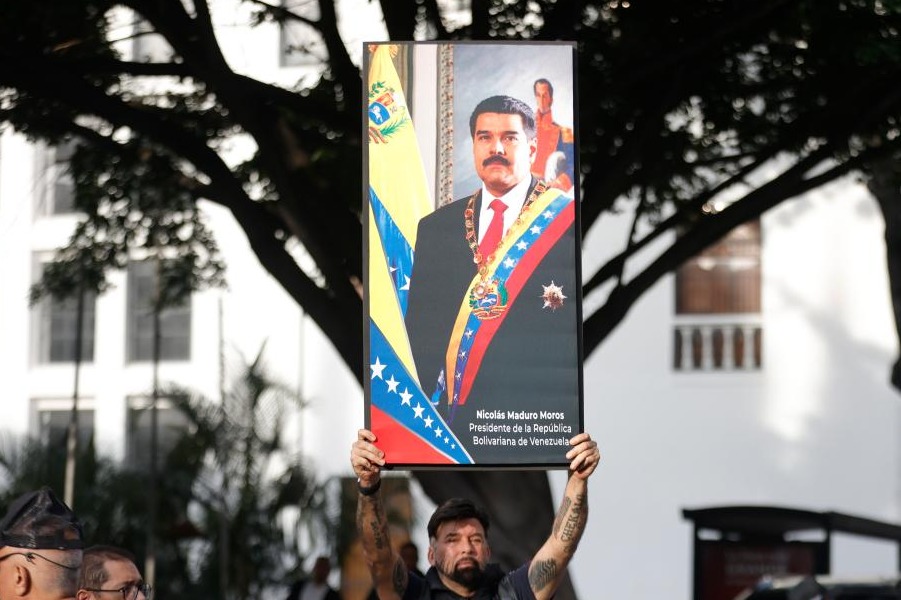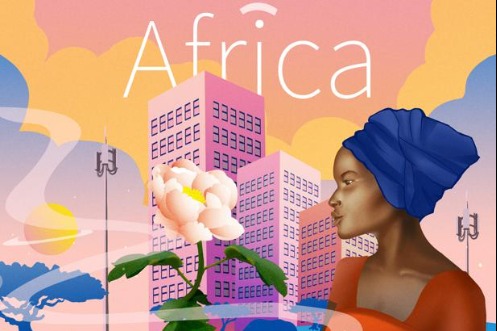Scope from the 'biggest player'
A decade of BRI shows how it gives the Global South interconnectivity and broader development opportunities


A decade of BRI shows how it gives the Global South interconnectivity and broader development opportunities
As we celebrate 50 years of Spain-China bilateral relations in 2023, coinciding with 10 years of the Belt and Road Initiative, and are just months away from celebrating in 2024 the 10th anniversary of its most emblematic land project — the Yiwu-Xinjiang-Europe train crisscrossing Eurasia, starting from Yiwu in Zhejiang province and ending in Spain's capital Madridwe can highlight several reasons why the BRI is unique in world history and in our times.
China has signed Belt and Road cooperation documents with over 150 countries and more than 30 international organizations.
The initiative is deeply enshrined in current trade and investment flows with nothing comparable. The United States' Build Back Better World Initiative lacks human resources and propelling forces. Almost two-thirds of the world have China as its first trading partner, concretely 120 countries in 2021, including not only the overwhelming part of the Global South, but also Japan, the Republic of Korea, Russia, Germany and the European Union.
Chinese President Xi Jinping proposed the initiative in Eurasia's heartland of Kazakhstan in September 2013, and one year later senior diplomats from Beijing arrived in Madrid to inaugurate and receive the first arriving wagons of the Yiwu-Xinjiang-Europe cargo train. Meanwhile, some countries in South East Asia and the Middle East are planning to inaugurate ports, new railroad lines and air connections that will enable high speed movements.
The BRI stemmed from a material traction resulting from adaptation step-by-step. I have witnessed it with my own eyes while studying and working in Beijing in the late 1980s.
Back then everything seemed possible. So, it was not surprise to me that the BRI seemed unbelievable but possible in September 2013. The initiative seemed grandiose and at the same time achievable. Simultaneously the country was emerging as the global leader in transport, green innovation and ecological protection.
Let's remember, at the beginning of the 21st century China had no high-speed railways. Between 2008 and now China has developed the world's largest and most powerful high-speed rail network.
All in all, the above-mentioned extraordinary practical skills have also undoubtedly been instrumental in establishing a moderately prosperous society with more than 400 million middle-income earners. And the world has been watching, and correspondingly interacting with China, the "symbiotic partner".
The initiative encompasses not only the well-known activity involving mega-railroad routes, super-containers and infrastructure, but a comprehensive interaction between material and human as well as China and the world. Over the past decade, years and months, one could highlight notable contributions from the initiative.
On July 29, a freight train bound for Madrid, Spain, departed from Yiwu, in east China's Zhejiang province, marking the 10,000th China-Europe freight train trip this year alone.
On Aug 28, China's Shenzhen Airlines inaugurated a new direct route from the industrial hub of Shenzhen in South China to Spain's second largest city Barcelona, Europe's eighth busiest container port and one of the EU's most cosmopolitan maritime cities. It is an intercontinental breakthrough. In Europe now, Shenzhen Airlines only operates in London and Barcelona.
In early September, the Spain-based China-Europe Association for the Promotion of Mutual and Sustainable Trust (EU-China Trust) hosted an official visit by senior officials from Hefei, the city in East China that leads the world in electric car manufacturing. It is worth remembering that transport, mobility and sustainability are currently the core concepts propelling the BRI. The delegation visited Madrid, Salamanca and Barcelona. The "China and Spain, Striving Together Towards Sustainable Mobility" event was held during their visit to bring different key organizations, public administrations and private sector stakeholders together to promote cooperation in sustainable policies.
The World Bank's study on Belt and Road transportation corridors suggests that while the initiative can accelerate economic development and reduce poverty in many developing countries, it can also be instrumental in further developments, such as digital care. Just half a year ago, Chinese technology corporation Huawei and the Hospital Clinic de Barcelona in Barcelona signed a memorandum of understanding to promote the use of technology in healthcare under which Huawei will provide telecommunications equipment and technological solutions using artificial intelligence and 5G connectivity, reinforcing the digitization of Spain's health system. The program would help in early detection of diseases and in improving medical care as well as exploring new forms of field interactions, including remote connection treatment and patient monitoring.
As we look ahead to the second decade of the BRI, we see opportunities and challenges.
Of the latter, the top one (not neglecting increased transparency, improved debt sustainability, and the mitigation of environmental, social and corruption risks demands, all important and manageable challenges) is to address how AI will further play a role in interconnecting the world.
The initiative has contributed to transforming the concept of an international community which until recently meant a handful of countries in the Northern Hemisphere. It offers developed countries chances of greater interconnectivity and gives the Global South interconnectivity plus broader development opportunities and choices.
The challenge and the opportunity for further and faster development for mankind is in tune with the most meaningful description of the country outside China made by the late Singaporean prime minister Lee Kuan Yew. His dictum reverberates today: "China is the biggest player in the history of the world."
The author is a professor at the Esade Educational Institution of Ramon Llull University and the director of the Dialogue with China Project in Spain. The author contributed this article to China Watch, a think tank powered by China Daily. The views do not necessarily reflect those of China Daily.
Contact the editor at editor@chinawatch.cn.


































